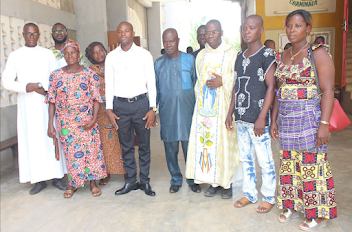July 2022
My dear graduates of Chaminade, Kellenberg Memorial, and St. Martin de Porres Marianist School,
Recently, I read a description of refugees fleeing Ukraine. The author described a typical image of a woman on foot, carrying a single heavy bag of belongings. Such an image prompted the question: If you were forced to leave your home with one bag, unsure if you would ever return, what would you take with you?
What is essential? The use of the word essential has increased exponentially during the global pandemic, hasn’t it? Supplies, services, and even human workers have been identified as essential or not. One thing we might learn from the Ukrainian refugees is that the most important things in life are not things. The refugees are fleeing with so little because their own lives and the lives of their loved ones are more important than their homes, cars, and personal possessions. What is essential? People, relationships.
Two thousand years ago, Jesus, Mary, and Joseph were refugees themselves. I wonder what they considered essential for their journey? On several occasions, they traveled long distances, over fairly inhospitable terrain, on roads and paths far inferior to ours.
What is essential? I’m guessing the Holy Family packed pretty light. After all, Jesus would later tell his Apostles as he sent them out to preach: “Do not take gold or silver or copper for your belts; no sack for the journey, or a second tunic, or sandals, or walking stick.” (Mt 10:9-10)
July is a month when many of us end up traveling and therefore packing a bag. We ask ourselves: “What will I need? What is essential for this trip?” I am the first to admit I am terrible at packing. I leave it to the last minute and always bring way more stuff than I really need.
Imagine one more traveler: Blessed William Joseph Chaminade. It is 1797, and the Revolution is at the height of its fervor in France. Fr. Chaminade has ministered in secret to a faithful flock in Bordeaux for as long as he could, but now he is forced to go into exile. He travels to Spain, eventually staying in Saragossa for three years. As far as I know, we don’t have definitive information about his mode of transportation or his exact route, and we certainly don’t know what he packed in his bag. But Blessed Chaminade does offer an answer to that perennial question: What is essential? “The essential is the interior.” By this he means our heart, mind, and soul, the center of our self that defines who we are.
In the writings of our Founder, we find many references to the importance of the interior life. For example, Father Chaminade writes to one fellow Marianist: “Be careful that the great number of your occupations does no harm to the interior spirit.” Blessed Chaminade’s words ring true for all of us today. The stories of each of the travelers we’ve just met bring his point home that much more poignantly. The essential things in life are not things, but people: ourselves and every single human person we meet, because we are made in the image and likeness of God.
If our interior life is essential, how do we care for it? We don't have to travel long distances or pack a suitcase. This is the beauty of our Catholic faith: Prayer, Scripture, and the Sacraments of the Eucharist and Reconciliation are straightforward, readily available means to nurture our interior life. Hopefully, the summer affords us a little breathing room to work on the essentials.
Prayer is essential: We share our interior with God, and listen to the Father’s voice within us.
Scripture is essential: The Word of God penetrates deep within.
The Eucharist is essential: We literally receive Christ’s Body into ours and unite our soul with His.
Reconciliation is essential: We reunite our heart with God and all those from whom our sin divides us.
Ukrainian refugees, the Holy Family, and Blessed Chaminade were forced to pack a single bag and leave their homes for a long journey. Their circumstances pushed them to ask: what is essential?
As Christian pilgrims journeying back to the Father, we are blessed to be able to ask that question from a place of freedom, rather than fear and necessity. We can respond on a spiritual level, recognizing that “the essential is the interior” -- our interior, our heart and soul. Whether we are covering lots of miles this summer, or just sitting quietly on a beach, let’s give the essential its due and take time to cultivate our inner life, using this Magnificat magazine and all the beautiful means our Catholic faith offers. As Fr. Chaminade said to another fellow Brother: “Work at becoming an interior man, a man of faith.” And if there is anything any of us can do to help you, please don’t hesitate to reach out.
On behalf of all of my Marianist Brothers,
Fr. Peter Heiskell, S.M.














